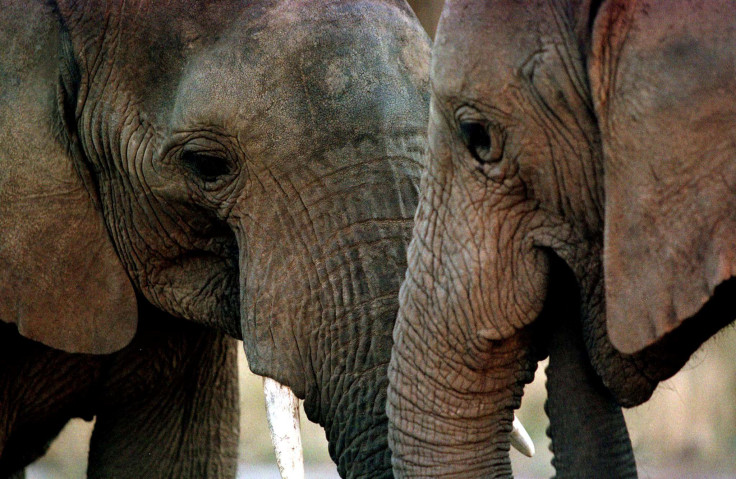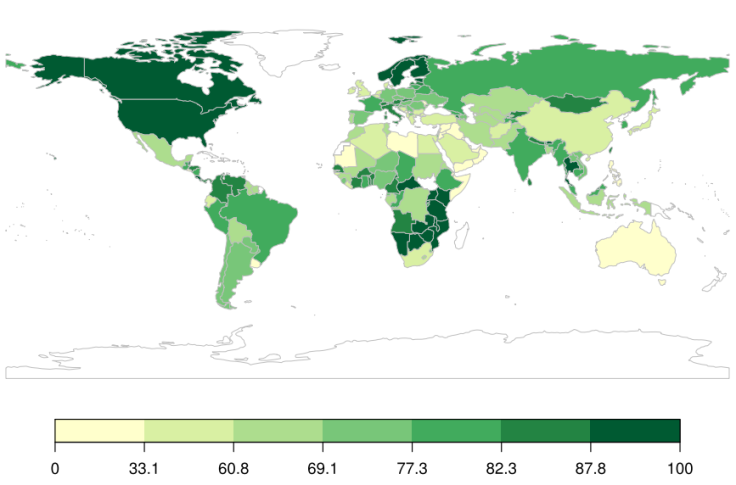Wildlife Conservation: World's Richest Nations Aren't Doing Enough To Save Large Mammals From Extinction

Scientists are now increasingly starting to believe human activities have pushed our planet into a sixth mass extinction event — one whose impact would be catastrophic, widespread, and irreversible.
Recent estimates have shown about 59 percent of the world’s largest carnivores — a group that includes lions and tigers — and 60 percent of the biggest herbivores (such as elephants and rhinos) are currently facing the threat of extinction.
Given the obvious severity of the situation, one would assume countries across the globe would be doing their utmost to conserve wildlife. However, a new analysis by researchers at Oxford University’s Wildlife Conservation Research Unit (WildCRU) and the nonprofit Panthera has revealed this is not so.
Read: Overhunting Is Pushing Wild Mammals Toward Extinction
For the purpose of their analysis — published Thursday in the journal Global Ecology and Conservation — the researchers created a Mega-Fauna Conservation Index (MCI) of 152 nations. This revealed a marked variation between countries in contributions to the conservation of the world’s terrestrial megafauna (large mammal species), with — and this is the surprising bit — poorer countries taking a more active approach than their richer counterparts.
Ninety percent of countries in North and Central America, and 70 percent of countries in Africa, were classified as major or above-average performers, while 25 percent of Asian countries, and 21 percent across Europe, were identified as major underperformers.
Four of the five top performers were African nations. The United States, by contrast, ranked 19th out of the top 20 performing countries.

“Every country should strive to do more to protect its wildlife. Our index provides a measure of how well each country is doing, and sets a benchmark for nations that are performing below the average level, to understand the kind of contributions they need to make as a minimum,” study co-author David Macdonald, director of WildCRU, said in a statement. “There is a strong case for countries where mega-fauna species have been historically persecuted, to assist their recovery.”
The MCI took into account three key factors — the number of megafauna species within each country’s borders, the percentage of megafauna habitat that was under “strict protection” (as defined by the International Union for Conservation of Nature), and the percentage of gross domestic product the country allocated to conservation efforts.
“We caution, however, that scoring highly relative to other countries does not necessarily mean that efforts by a particular country are adequate,” the researchers wrote in the study. “Examples are some African countries where wildlife populations even in many protected areas are declining and depleted. The worst performers, on the other hand, tended to score poorly on all three components.”
The authors of the study attributed this disparity in towards differences in “existence values,” where the knowledge of large wild animals' existence makes people happier. In relatively poor countries like Kenya, Botswana and South Africa, these large mammals play a significantly higher role in predator–prey cycles and other crucial ecological processes — making their conservation a higher priority than it would otherwise be.
And then there is the economic aspect. In most of the countries that rank near the top in terms of MCI, wildlife-based tourism comprises significant proportions of the GDPs, and provides ample opportunities for employment and economic growth.
“The Megafauna Conservation Index is an important first step to transparency – some of the poorest countries in the world are making the biggest investments in a global asset and should be congratulated, whereas some of the richest nations just aren’t doing enough,” study co-author William Ripple from Oregon State University said in the statement.
© Copyright IBTimes 2025. All rights reserved.






















